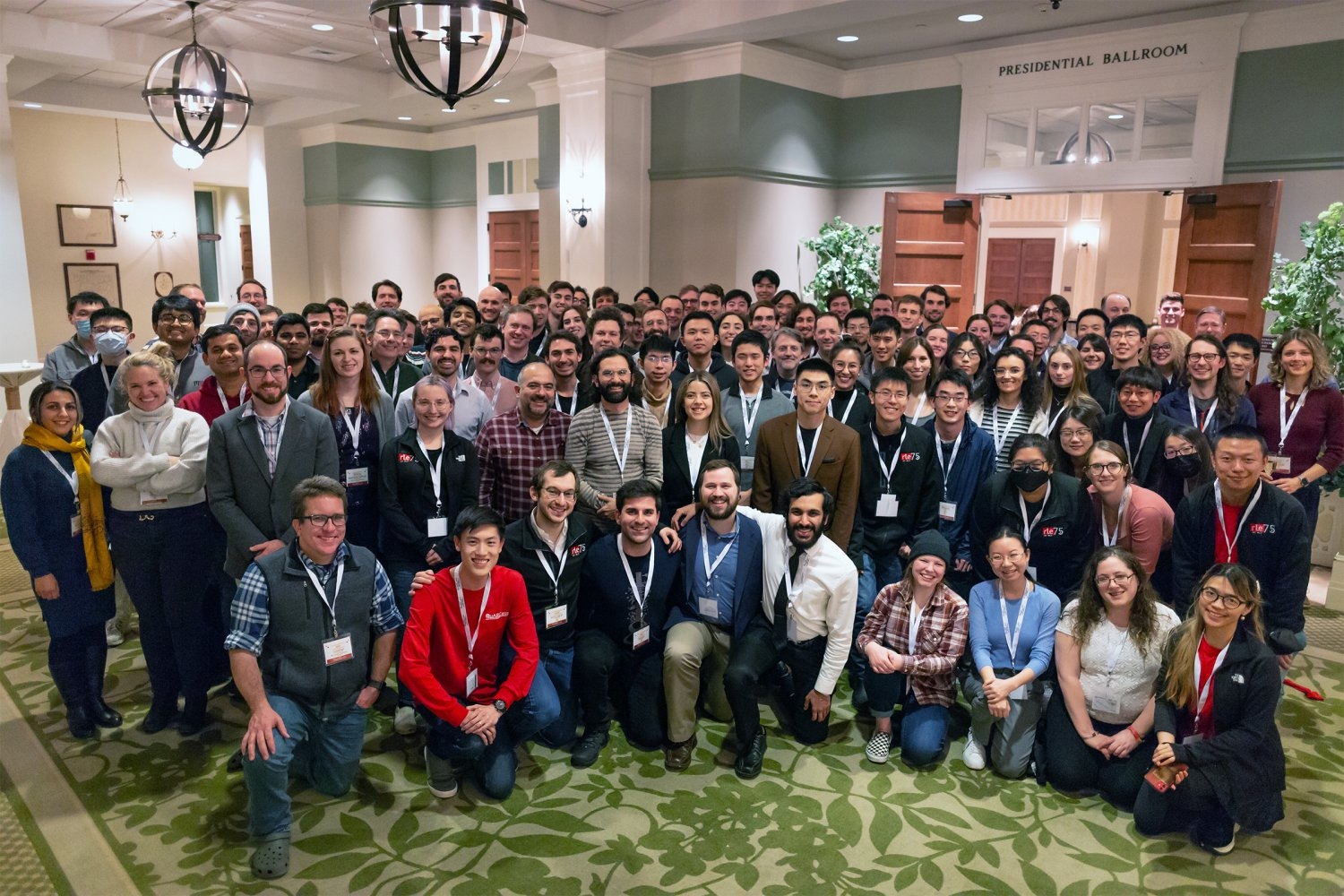
The second annual student-industry conference was held in-person for the first time.
Center for Quantum Engineering
The second QSEC Annual Research Conference (QuARC) brought together MIT student and postdoctoral researchers, staff, faculty, and industry partners for a two-day exploration of the leading edge in quantum information science and engineering.
Held on Jan. 23 and 24 at the Omni Mount Washington Resort in New Hampshire, QuARC featured keynote addresses from prominent thinkers in the field, as well as presentations and posters on the latest results from MIT research. The conference launched in 2022 to give members of the Quantum Science and Engineering Consortium (QSEC) an opportunity to engage with MIT students and faculty across the Institute and gain insight into their work.
“MIT has a wonderfully broad quantum community spanning research from quantum sensing to quantum networking and quantum computing. The QuARC is our opportunity to come together, make connections, and focus on quantum science and engineering with our colleagues from campus, MIT Lincoln Laboratory, government sponsors, and our industrial membership group,” says William D. Oliver, the Henry Ellis Warren Professor of electrical engineering and computer science and of physics, and director of the Center for Quantum Engineering.
Peter Shor, the Morss Professor of Applied Mathematics at MIT, opened the first night with a keynote talk on quantum error correction, a function that will be essential for creating workable quantum computers. Beginning with his 1994 development of the Shor Algorithm — a landmark algorithm showing that a quantum computer could factor large integers exponentially faster than the best-known classical algorithm — Shor discussed the history of error correction and finished with examples of more recent quantum codes like hypergraph product codes.
On QuARC’s second day, the keynote speaker was Erik Lucero, lead quantum engineer and site lead at Google Quantum AI. In his talk, Lucero spoke about his team’s research demonstrating the ability to suppress quantum errors by scaling a surface code logical qubit. These results mark the first experimental demonstration where quantum error correction begins to improve performance with increasing qubit number, illuminating the path to reaching the logical error rates required for computation. “We made a system bigger, and it didn’t get worse, and that’s pretty awesome,” Lucero said.
“I found Professor Shor’s and Dr. Lucero’s talks to be an excellent combination of theoretical and experimental developments in quantum information science and engineering, and they only made me more excited to see future developments in our field,” says Hamza Raniwala, one of the QuARC co-chairs and a graduate student from Professor Dirk Englund’s Quantum Photonics Laboratory.
Student from MIT’s Interdisciplinary Quantum Information Science and Engineering (iQuISE) program organized the event, which was co-sponsored by the Center for Quantum Engineering (CQE), the Research Laboratory of Electronics (RLE), and the Microsystems Technology Laboratories (MTL), and supported by MIT.nano.
A significant change from last year’s inaugural event was making QuARC 2023 an in-person gathering. “QuARC is a great platform to build a sense of quantum community, especially in person,” says Yuqin “Sophia” Duan, the other event co-chair who is also from the Englund lab. “It was cool to see students who had only met over Zoom skiing together on the first day. Additionally, the informal conversation with industrial representatives over the lunch table is so valuable that it can be difficult to replicate in a virtual setting.”
The event’s topical sessions and the session chairs were:
- Solid-State Defect Engineering (graduate student Kevin Chen)
- Quantum Sensing and Imaging (graduate student Guoqing Wang)
- Superconducting Quantum Systems (graduate student Sarah Muschinske)
- Low-Dimensional Materials and Devices (graduate student Hao Tang)
- Optics and Photonics (visiting scientist Ryan Hamerly)
- Atomic, Molecular, Optical Physics (graduate student Pierre Barral)
- Quantum Algorithms and Machine Learning (graduate student Boning Li)
Along with Duan and Raniwala, other members and roles on the conference committee were postdoc Artur Hermans (event co-coordinator, with Wang); postdoc Wouter Van De Pontseele and graduate student Alex Ungar (social co-chairs); Muschinske (industrial liaison); postdoc Santiago Hernández-Gómez (website manager); and graduate student Yukun Lu (volunteer).
Marc Baldo, RLE director and the Dugald C. Jackson Professor of Electrical Engineering, hailed the QuARC as the culmination of Oliver’s “pioneering vision for a new quantum engineering center at MIT.”
“The first in-person QuARC was an inspiring success. I am especially grateful to the student leaders for establishing the event with such initiative and passion,” he said. “It was an ideal way to help RLE celebrate its 75th anniversary and marks the beginning of a new tradition for our community.”
QuARC 2023 was held in conjunction with the Microsystems Annual Research Conference (MARC), which took place on Jan. 24 and 25, also at Bretton Woods. MIT students and faculty, as well as industry affiliates, were encouraged to attend both events and experience a breadth of research and engineering in materials, structures, devices, circuits, and systems.
